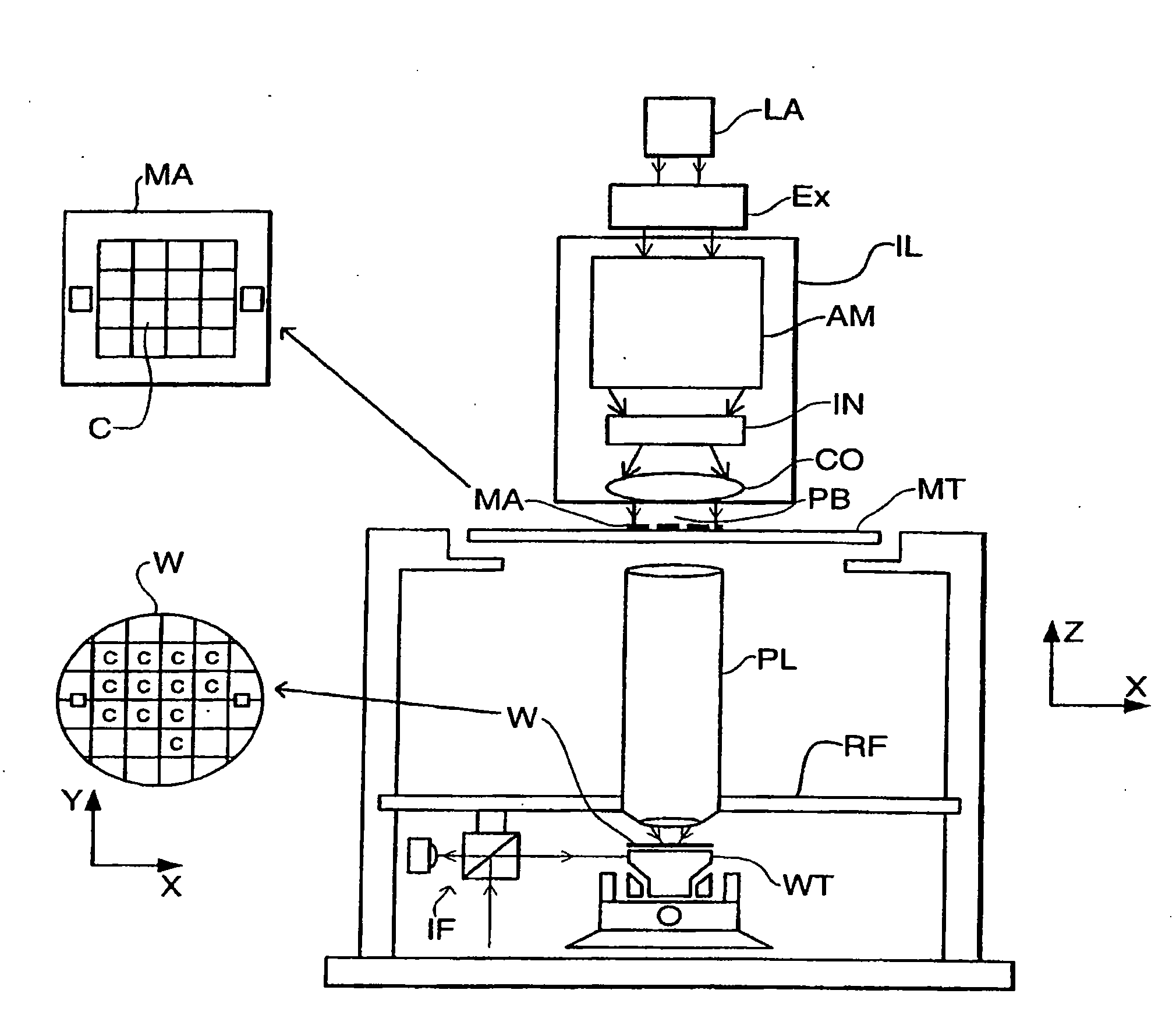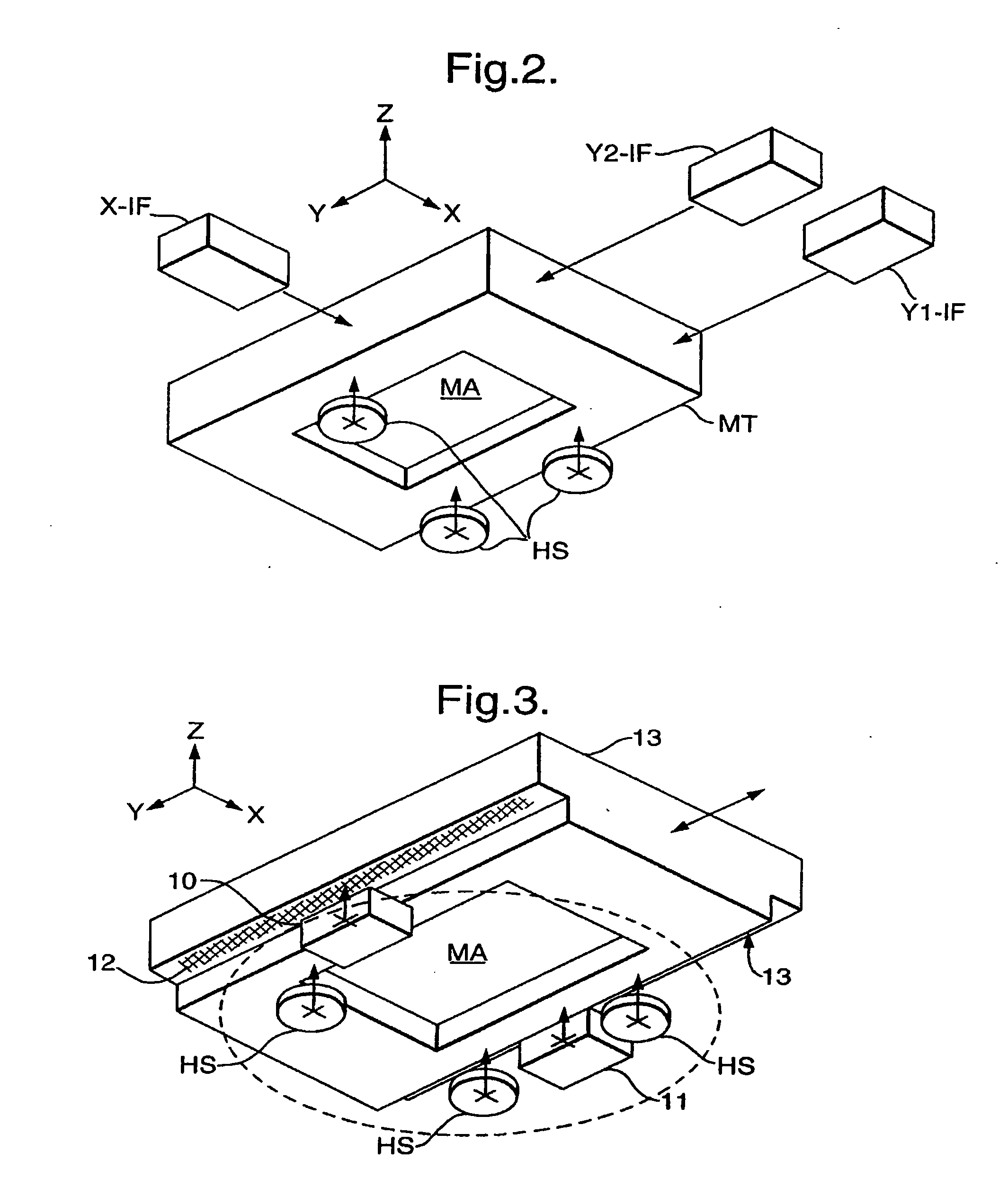Lithographic Apparatus, Device Manufacturing Method and Device Manufactured Thereby
a technology of lithographic apparatus and manufacturing method, which is applied in the direction of photomechanical apparatus, instruments, optics, etc., can solve the problems of inability to achieve absolute accuracy and in particular dependence of wavelength on environmental factors, and inability to achieve absolute accuracy and thermal stability over long travel ranges. achieve the effect of reducing the effect of localized unevenness of the target surface, high stability and simple implementation
- Summary
- Abstract
- Description
- Claims
- Application Information
AI Technical Summary
Benefits of technology
Problems solved by technology
Method used
Image
Examples
Embodiment Construction
[0080]FIG. 1 schematically depicts a lithographic projection apparatus according to a particular embodiment of the invention. The apparatus comprises:
[0081]a radiation system including a beam expander Ex, and an illumination system IL, for supplying a projection beam PB of radiation (e.g. UV radiation), which in this particular case also comprises a radiation source LA;
[0082]a first object table (mask table) MT provided with a mask holder for holding a mask MA (e.g. a reticle), and connected to first positioning module for accurately positioning the mask with respect to a projection system PL;
[0083]a second object table (substrate table) WT provided with a substrate holder for holding a substrate W (e.g. a resist-coated silicon wafer), and connected to second positioning module for accurately positioning the substrate with respect to item PL;
[0084]a projection system (“lens”) PL (e.g. lens group) for imaging an irradiated portion of the mask MA onto a target portion C (e.g. comprisi...
PUM
 Login to View More
Login to View More Abstract
Description
Claims
Application Information
 Login to View More
Login to View More - R&D
- Intellectual Property
- Life Sciences
- Materials
- Tech Scout
- Unparalleled Data Quality
- Higher Quality Content
- 60% Fewer Hallucinations
Browse by: Latest US Patents, China's latest patents, Technical Efficacy Thesaurus, Application Domain, Technology Topic, Popular Technical Reports.
© 2025 PatSnap. All rights reserved.Legal|Privacy policy|Modern Slavery Act Transparency Statement|Sitemap|About US| Contact US: help@patsnap.com



